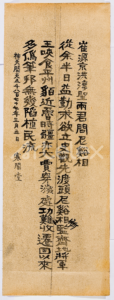Lee Yu-rip: A Controversial Nationalist and Religious Leader
1. Early Life and Background
Lee Yu-rip (December 18, 1907 – April 18, 1986) was a Korean religious figure and nationalist activist, best known as the leader of the small religious sect Taebaekgyo. Born in Gugok-myeon, Sakju-gun, Pyeonganbuk-do, he came from a lineage that traced back to the late Goryeo civil official Lee Am. He used numerous pen names, including Chaeyoung, Hanamdang, and Danhakdongin, and claimed Goseong as his ancestral origin.
2. Claims of Independence Activism
Lee stated that he participated in the March 1st Movement of 1919 and later organized the Joseon Independence Youth Corps in 1921. He graduated from Sakju Higher Ordinary School and began publishing poetry in the 1930s through Joseon, a magazine issued by the Japanese colonial government. However, much of his alleged independence activities are only documented in his own writings and have not been corroborated by other contemporary sources.
3. Collaboration with Japanese Authorities
Despite his self-identification as a nationalist, Lee was involved in several pro-Japanese activities during the colonial period. He held positions within organizations like the Joseon Confucian Association and served as editor of its journal Ilwol Sibo. He also worked as the Sakju branch chief of Dong-A Ilbo during its pro-Japanese phase after the Second Sino-Japanese War, leading to widespread suspicions of collaboration.
4. Religious Activities and the Hwandangogi Controversy
Lee later dedicated himself to religious leadership, becoming involved in the Dahnakhwae and eventually reestablishing it as the Dandanhwae, a nationalist-oriented sect. He claimed to be the custodian of the Hwandangogi, a disputed text purporting to document Korea’s ancient history. However, most scholars believe that Lee himself authored the text, which has been criticized for containing pro-Japanese content. He passed the manuscript to General Park Chang-am, who later delivered it to Japanese historian Kajima Noboru. Kajima used the text to support the Ilseondongjoron theory—a claim of shared ancestry between Koreans and Japanese—causing further backlash.
5. Legacy and Ongoing Debate
Lee Yu-rip continued his religious and ideological work until his death in 1986 at the age of 78. While some continue to regard him as a nationalist with religious vision, others view his legacy as deeply compromised due to evidence of pro-Japanese collaboration and the controversies surrounding the Hwandangogi. His life remains emblematic of the complex identities formed during Korea’s colonial era.

